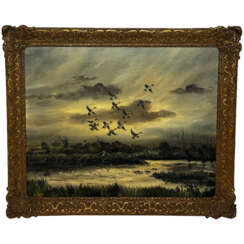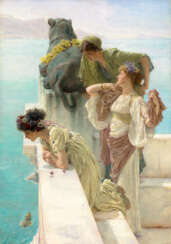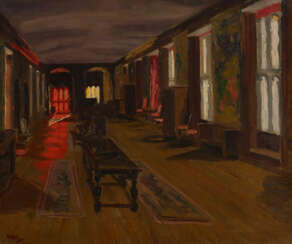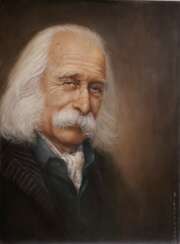british painting

Harry Watson was an English landscape and portrait artist born in Scarborough. He studied at the Scarborough School of Art, at Lambeth School of Art and at the Royal College of Art, where he won numerous gold, silver and bronze medals and was awarded a traveling scholarship to Italy. Watson exhibited at the Royal Academy from 1896. Taught at Regent Street Polytechnic from 1913. Watson embraced En plein air painting, often capturing the effect of natural light falling to on to his subjects which gives many of his works an impressionistic style. His paintings Sunlight Reflected Upon a Wide Riverscape and Reflected Light are two examples which demonstrate his use of natural light. His watercolour Across the River is in the permanent collection at the Tate Gallery. The Christchurch art gallery, Wellington art gallery and Brighton & Hove Museum & Art Gallery also have examples of his work. His work was part of the painting event in the art competition at the 1932 Summer Olympics.


Donald Grant is one of Britain's leading wildlife artists who has used his art to raise funds for conservation and animal welfare charities around the world.


Edward Brian Seago was an English artist who painted in both oils and watercolours.


William Powell Frith was a British painter.
Frith studied at the Royal Academy School and fairly quickly began to exhibit there, becoming a Fellow of the Royal Academy in 1852. Frith became famous for his scenes of contemporary English life, including those with moralizing overtones. His multi-figure, complex compositions depict a wide variety of Victorian backgrounds. He was a traditionalist and an opponent of the Pre-Raphaelites, ridiculing them in his works.

.jpg)
Lawrence Alma-Tadema was a Dutch-British artist renowned for his detailed and romanticized portrayals of ancient civilizations, particularly Rome and Egypt. His meticulous attention to historical accuracy and the lavish representation of marble and luxurious settings distinguished his work. Notably, his fascination with ancient cultures was sparked by his honeymoon visit to Italy and Pompeii, influencing his artistic focus for decades.
Lawrence Alma-Tadema's early work, such as "The Education of the Children of Clovis," showcased his interest in historical subjects and established his reputation. This painting, alongside others like "The Sad Father," demonstrates his commitment to historical detail and narrative depth.
After moving to England due to the Franco-Prussian War and personal reasons, Lawrence Alma-Tadema's career flourished. His works, characterized by their bright palette and refined details, resonated with Victorian audiences, earning him considerable fame and financial success. He was knighted in 1899 and continued to be a pivotal figure in Victorian art, influencing peers and future generations alike.
Lawrence Alma-Tadema's legacy experienced a decline posthumously but saw a resurgence in the 1970s. Today, he is celebrated for his contributions to the Neoclassical and Victorian art movements, with his works featured in prominent collections worldwide, including the Getty Museum and the Tate Gallery.
If you are fascinated by Lawrence Alma-Tadema's artwork and wish to stay updated on sales and auction events related to his works, consider signing up for updates. This will ensure you remain informed about new opportunities to explore and possibly acquire pieces of his illustrious legacy.


Sir Winston Leonard Spencer Churchill was a British statesman, soldier and writer who served as Prime Minister of the United Kingdom from 1940 to 1945, during the Second World War, and again from 1951 to 1955. Apart from two years between 1922 and 1924, he was a Member of Parliament (MP) from 1900 to 1964 and represented a total of five constituencies. Ideologically an economic liberal and imperialist, he was for most of his career a member of the Conservative Party, which he led from 1940 to 1955. He was a member of the Liberal Party from 1904 to 1924.

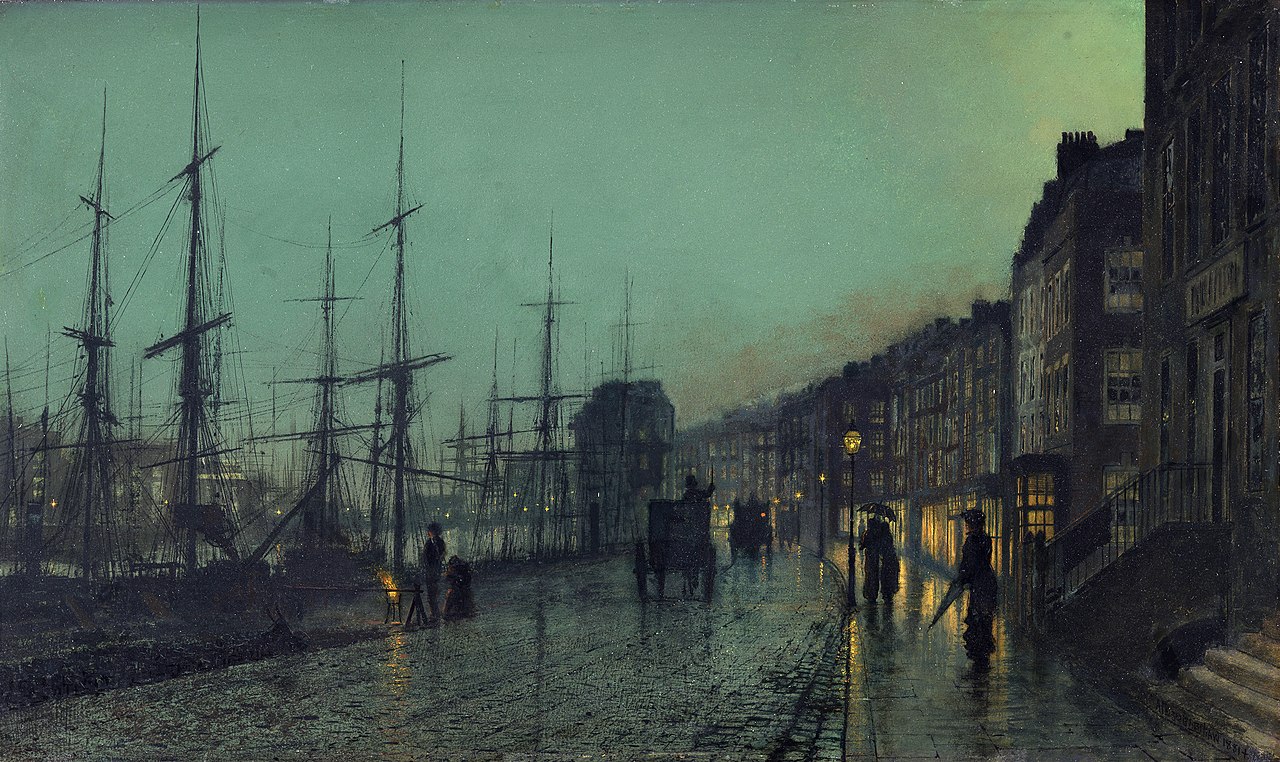
John Atkinson Grimshaw was an English Victorian-era artist best known for his nocturnal scenes of urban landscapes. He was called a «remarkable and imaginative painter» by the critic and historian Christopher Wood in Victorian Painting (1999).
Grimshaw's love for realism stemmed from a passion for photography, which would eventually lend itself to the creative process. Though entirely self-taught, he is known to have used a camera obscura or lenses to project scenes onto canvas, which made up for his shortcomings as a draughtsman and his imperfect knowledge of perspective. This technique, which Caravaggio and Vermeer may also have used, was condemned by a number of his contemporaries who believed it demonstrated less skill than painting by eye, with some claiming that his paintings appeared to «show no marks of handling or brushwork», while others "were doubtful whether they could be accepted as paintings at all". However, many recognised his mastery of colour, lighting and shadow, as well as his unique ability to provoke strong emotional responses in the viewer. James McNeill Whistler, who Grimshaw worked with in his Chelsea studios, stated, «I considered myself the inventor of nocturnes until I saw Grimmy's moonlit pictures».


Frederic Leighton was a distinguished British artist renowned for his contributions to painting and sculpture during the Victorian era. His works, characterized by their classical themes and meticulous detail, have garnered appreciation from art collectors and historians alike. Notable for being the first painter to receive a peerage, Leighton's legacy in the art world is significant.
Frederic Leighton's art, particularly his paintings like "Flaming June" and "The Return of Persephone," showcases his mastery in depicting classical and mythological subjects with a unique blend of realism and idealism. His sculptures, such as "An Athlete Wrestling with a Python" and "The Sluggard," played a pivotal role in initiating the New Sculpture movement, emphasizing naturalism and dynamic forms.
Despite his illustrious career, Frederic Leighton's personal life remained private, with ongoing debates about his relationships and sexuality. His London home, now the Leighton House Museum, offers a glimpse into his artistic world, housing many of his works and collections that influenced his creations.
For art collectors and experts, Frederic Leighton's oeuvre represents a blend of academic tradition and innovative expression, making his works highly sought after in the realms of art and antiques. To stay informed about exhibitions and auction events featuring Frederic Leighton's art, subscribing to updates can be a valuable resource for enthusiasts eager to explore and acquire pieces from this influential Victorian artist.


Frederic Leighton was a distinguished British artist renowned for his contributions to painting and sculpture during the Victorian era. His works, characterized by their classical themes and meticulous detail, have garnered appreciation from art collectors and historians alike. Notable for being the first painter to receive a peerage, Leighton's legacy in the art world is significant.
Frederic Leighton's art, particularly his paintings like "Flaming June" and "The Return of Persephone," showcases his mastery in depicting classical and mythological subjects with a unique blend of realism and idealism. His sculptures, such as "An Athlete Wrestling with a Python" and "The Sluggard," played a pivotal role in initiating the New Sculpture movement, emphasizing naturalism and dynamic forms.
Despite his illustrious career, Frederic Leighton's personal life remained private, with ongoing debates about his relationships and sexuality. His London home, now the Leighton House Museum, offers a glimpse into his artistic world, housing many of his works and collections that influenced his creations.
For art collectors and experts, Frederic Leighton's oeuvre represents a blend of academic tradition and innovative expression, making his works highly sought after in the realms of art and antiques. To stay informed about exhibitions and auction events featuring Frederic Leighton's art, subscribing to updates can be a valuable resource for enthusiasts eager to explore and acquire pieces from this influential Victorian artist.


William Powell Frith was a British painter.
Frith studied at the Royal Academy School and fairly quickly began to exhibit there, becoming a Fellow of the Royal Academy in 1852. Frith became famous for his scenes of contemporary English life, including those with moralizing overtones. His multi-figure, complex compositions depict a wide variety of Victorian backgrounds. He was a traditionalist and an opponent of the Pre-Raphaelites, ridiculing them in his works.


Arthur Hughes was an English painter and illustrator associated with the Pre-Raphaelite Brotherhood.


James Guthrie was a Scottish painter, prominent as part of the Glasgow Boys, and is celebrated for his portraiture and contributions to Scottish Realism. Born on June 10, 1859, in Greenock, Guthrie’s work reflected the influence of French realists, particularly Jules Bastien-Lepage, noted for rural subjects depicted with broad, square brush strokes.
His early artistic journey saw him forsake law studies at Glasgow University for painting, a self-taught endeavor that led him to become one of the leading lights of his artist collective. Guthrie's works are characterized by a unique blend of realism and the vibrant influence of French painting techniques, making his work distinctive in the Scottish art scene of the time.
For art collectors and enthusiasts, Guthrie's works like "Statesmen of World War I," held at the National Portrait Gallery in London, offer a glimpse into the evolution of Scottish painting. His portraiture not only captures the visage of his subjects but also the cultural fabric of his era. Those interested in the intersection of French influence and Scottish artistry would find his works a valuable addition to their collections.
To stay abreast of exhibitions and sales featuring James Guthrie's esteemed works, signing up for specialized updates can enrich your collection with pieces emblematic of Scottish Realism. Explore the depths of Guthrie's art and seize the opportunity to own a part of Scottish art history.


Thomas Ralph Spence was a British architect, painter and sculptor.
Following a family tradition, Spence began his education as an architect, but later excelled in painting, stained glass and metalwork. In 1885 he moved to London, where he became a successful architectural decorator, responsible for decorative painting at Manchester Cathedral. His largest project was St. George's Church in Jesmond, commissioned by Mitchell Senior, it is considered Spence's greatest architectural triumph.
Spence was highly respected as a decorative artist and designer, his stained glass, metalwork and architectural designs were much admired. In 1896 he co-founded the Society of Designers.
Many of Spence's paintings are inspired by the mythology and classical history of Rome, the time of the Punic War. They include scenes of both domestic life and historical events with many participants. He has exhibited with consistent success at the Royal Academy since 1876.


Alfred James Munnings was known as one of England's finest painters of horses, and as an outspoken critic of Modernism. Engaged by Lord Beaverbrook's Canadian War Memorials Fund, he earned several prestigious commissions after the Great War that made him wealthy. Between 1912 and 1914 he was a member of the Newlyn School of artists. His work was part of the art competitions at the 1928 Summer Olympics, the 1932 Summer Olympics, and the 1948 Summer Olympics.
Munnings was president of the Royal Academy of Arts from 1944 until his death.




John Atkinson Grimshaw was an English Victorian-era artist best known for his nocturnal scenes of urban landscapes. He was called a «remarkable and imaginative painter» by the critic and historian Christopher Wood in Victorian Painting (1999).
Grimshaw's love for realism stemmed from a passion for photography, which would eventually lend itself to the creative process. Though entirely self-taught, he is known to have used a camera obscura or lenses to project scenes onto canvas, which made up for his shortcomings as a draughtsman and his imperfect knowledge of perspective. This technique, which Caravaggio and Vermeer may also have used, was condemned by a number of his contemporaries who believed it demonstrated less skill than painting by eye, with some claiming that his paintings appeared to «show no marks of handling or brushwork», while others "were doubtful whether they could be accepted as paintings at all". However, many recognised his mastery of colour, lighting and shadow, as well as his unique ability to provoke strong emotional responses in the viewer. James McNeill Whistler, who Grimshaw worked with in his Chelsea studios, stated, «I considered myself the inventor of nocturnes until I saw Grimmy's moonlit pictures».
























